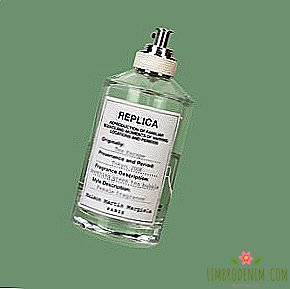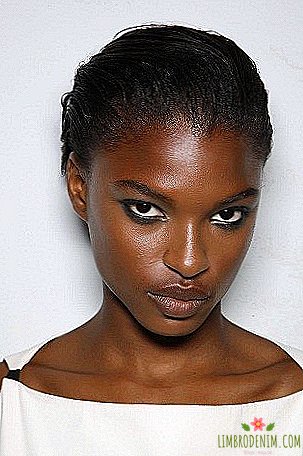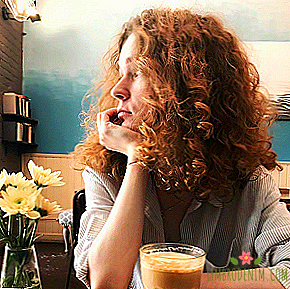Female team: Croatian art curators WHW
Wonderzine launches new category "Female team"where we will give the floor to musicians, artists, athletes, architects and other female professionals who have found a common language in the workplace.
The first heroines of the rubric are the female team of curators from Croatia WHW (What, How and for Whom) with an impeccable portfolio and an inspiring work ethic. Over the past 13 years, four curators from the former Yugoslavia have created a serious art platform with a focus on politics, history and philosophy, which many consider not just influential, but sometimes revolutionary. Sabina, Ana, Natasha and Ivet live in Zagreb and in Berlin, they prefer to speak out collectively and are known for challenging the art community in 2009 by publicizing the budget of the Istanbul Biennale, which they supervised. In connection with the opening of the exhibition “Favorite Art” in the Calvert 22 Gallery in London, Wonderzine talked with WHW about the features of their curatorial practice, Yugoslavia of the 1990s, acquaintance with curator Viktor Misiano, self-organization and the status of modern art in society.

About collective statement
We prefer to work collectively, because together we can do much more in the field of intervention of cultural space in politics. Topics that we touch on are often ignored altogether, or there are simply no channels to discuss them. We are often asked how we work in practice, how the division of labor and communication take place at a distance. It seems to us important that the team manages to use the strengths of all its participants, while not turning into a sum of four individuals. We want to believe that, thanks to the joint work of all that we do, add value. The issue of teamwork is closely related to the conditions in which we operate. We are all four freelancers who regularly work overtime and do the so-called "precarious work".
How it all began
The workflow began very organically and completely informally. Out of endless conversations and reflections in 1999, our first exhibition was born, which, in fact, was called "What, Like for Whom" and was dedicated to the 152nd anniversary of the Communist Party Manifesto. The exhibition touched upon, among other things, the issue of transition from a socialist to a capitalist economy and received an incredible response among the public and critics. It was a revelation for us that with the help of an exhibition, and not only through activism or some kind of academic work, such results can be achieved. We decided to continue.
What you do, how you do it and for whom you do it - we always try to respond to the context in which we work. We ourselves came out of a fairly marginal environment, including geographically, and are trying to find a “switch” with which we can relate what happened in the nationalist, right, autocratic, autistic, painful Croatia in the 1990s, to what happening in today's world. And the project we are working on right now is dedicated to the Arab world, but, again, the question is not in the Arab world, but in how it concerns the rest of the world. These “cultural translations”, many of which are based on our local context, determine the content of our curatorial practice.

About relevance
When we started, the pressing topics with which we worked were conflict, nationalism, and the secrecy of Croatia. Then these themes faded into the background, but now, with the recovery from the crisis and the intensification of the extreme right-wing sentiments in Europe, they are relevant again. For 13 years, the format of our work has also changed: we started as an informal group, but over time we became institutionalized. We are still freelancers, but there is some formalization of what we are doing.
As a rule, many of our exhibitions are perceived as an attempt to invade and disrupt the existing political and social landscape. We love art very much, we admire it and believe that we are very lucky that we communicate with so many people and artists from different parts of the world, from very different generations, with fantastic knowledge and phenomenal generosity. In 2001, when we first started working, we were somewhere around 25, we had very little experience, but we were lucky to meet with such established artists as Sanya Ivekovich, Mladen Stilinovich, Tomislav Gotovach ... And in 2002 we Victor Miziano was invited to take part in a lecture hall that we organized in Zagreb, and although at that time our work was not very well known, he came to meet. There were many such people, and they were generous with us, and we hope that we continue to share this generosity.
About the exhibition "Favorite art" in Ljubljana
In 2011, the Museum of Modern Art in Ljubljana invited us to make a project in its new building. In the 1990s, this museum was a very important institution. At the moment when Yugoslavia exploded in the war, he gathered an excellent collection of works by artists from post-socialist countries, including those from the former Yugoslavia, and did a fantastic job. It was a great honor to cooperate with this museum, especially in a very important period for us - after 10 years of joint curatorial work and in conditions that have changed greatly after the economic crisis. It was the perfect moment to give our critical assessment of the situation, express the accumulated doubts and discomfort, and look at the new perspective of the relationship between art and politics. And also to evaluate once again the status of art, which is the central theme of our practice throughout all exhibitions.
We very quickly came up with the name “Favorite Art”, borrowing it from a letter from the Croatian conceptual artist Mladen Stilinovic, which he addressed to art in 1999. The exhibition examines how the various differences, uncertainty, the desire to possess, evaluation and vice versa - depreciation, support and solidarity - manifest themselves in modern art practice and how it relates to political reality.
Now we are doing the same exhibition in London, and again refer to it - very interesting. On the one hand, the exposure has temporality, and it is very beautiful: something exists as an experience at a certain point in time, and then it is something that is broken into pieces and disappears. On the other hand, it was nice to revive the exhibition with a wonderful team of curators from Calvert 22, in a new space, both physically and mentally. We are already talking about the London context, where the works acquire a different sound, a different loudness and provoke new dialogues. It was a great opportunity for us to rewrite a love letter to art.
Photo: Nat Urazmetova





